Species
Los Buzos is located on the Pacific coast of Panama. We are fortunate to have a wide variety of species in our fishery which can be caught right behind our lodge, making it one of the best fishing destinations in the world. We’ve had clients land close to 20 species in one week! Due to the low fishing pressure in general this is an anglers paradise on the wild coast of the Azuero Peninsula of Panama.
Seasonality – our most popular question: “When do I come to catch ‘insert buckelist fish here’?
Our fishery for the large part is not seasonal as most of our fish are resident and thus the bite is more subject to currents, water temps, and other factors that are more random and depends less on migratory patterns. There are a few exceptions such as wahoo which generally come through July to November, and Snook & Corvina which are more concentrated in the dry season of January to March.
The main difference in our fishery regarding seasonality is the windy ( dry ) season vs the green season. The dry season brings North Winds that generally kick up mid January and last until the end of March and this eliminates some of our options such as kayak fishing behind the lodge and mothership trips to the east. However using our boats we still kayak and panga fish along our protected coastline to the West. Luckily this same season brings a migration of the larger tunas and chasing those giants is a large part of our business during this season along with fishing and camping along the remote shoreline of Cerro Hoya Park.
Don’t mistake the term green or rainy season. This period from Mid April through December is THE PRIME fishing season for all around fishing from kayak and pangas with cooler weather, a larger variety of species and more locations available.
While like all locations we occasionally alter our plans for a storm or two its much less common than places like Florida where tropical storms can alter weeks at the time. Our normal pattern is afternoon showers that cool things down and fire up the bite. We rarely miss fishing days with fewer than 7 charter days a year missed on average.

Roosterfish
Probably the number one bucketlist species for most of our anglers, and for a good reason! They fight hard and are beautiful to look at. The majority of our largest roosterfish are caught with live bait. Blue runners have consistently been the best. However, bonita, lookdown, small bigeye trevally, small jack crevalle, sierra mackerel, pacific bonito and mullet also work very well. Small to midsize roosterfish prefer artificial baits. Medium roosters like knife jigs worked between 60-120ft around reefs and rocks, as well as poppers near exposed reef and along the shoreline. Smaller roosters prefer small poppers, jigs, and Yo-Zuri lures trolled or casted near rocks.
Cubera / Pacific Dog Snapper
Live baits and poppers have proven very productive. Popping with small or large poppers over reefs of 50ft or less can be very exciting. Our largest cubera to date was landed on a 4in Halco popper. Jigging with 150g knife jigs has proven to be a good technique on deeper reefs from 80ft to 150ft. Dead bait works as well. To fish a dead bait, we have found bonitas to work the best, hooked in the tail and drifted out slowly with no weight on reefs 40ft and deeper.
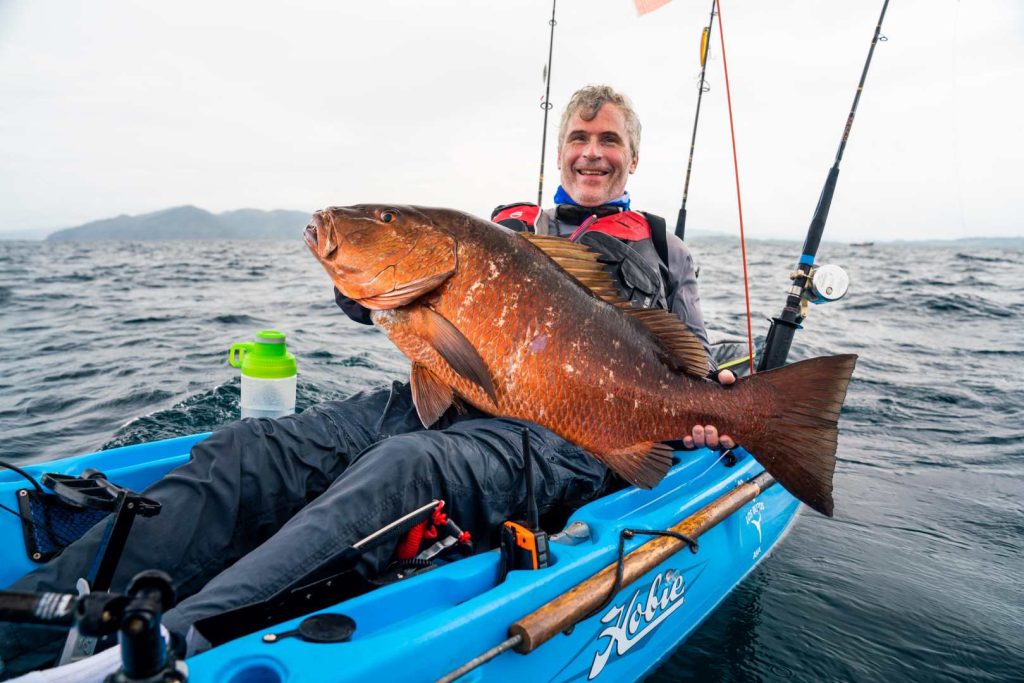
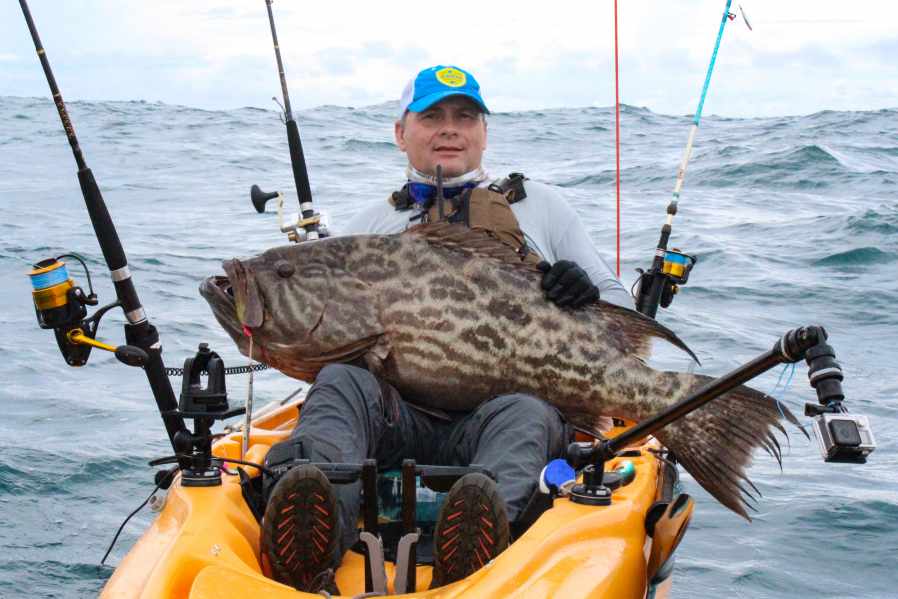
Broomtail Grouper
The vast majority have been caught between 100 and 150ft of depth on knife and flutter jigs 100g or more. Bouncing the jig on the bottom several times followed by fast steady retrieve has been the most successful technique. Large jigheads 10oz or more with rubber swimbaits pulled over the bottom has been good as well as fishing dead bait. A weight can be used in this case as these fish are generally in deeper water. A 2oz or larger weight about 6ft from a bonito hooked either in the mouth or tail has brought some of the largest groupers to the surface.
Yellowfin Tuna
Surprisingly and to our delight, these fish prefer poppers over almost anything. No matter what size the popper, or the tuna, they absolutely love them. We like to use larger poppers as they can be casted further than smaller light weight ones. Fast retrieve, slow retrieve, or even popper sitting still has triggered countless bites. When they are being picky (which is rarely the case) they will almost always smash a small xps jig which is a knife jig 30g or less. Generally, when we catch these tuna we are sight fishing for them. If no tunas are seen jumping, a great technique is to troll as small to medium size Yo-Zuri minnow.
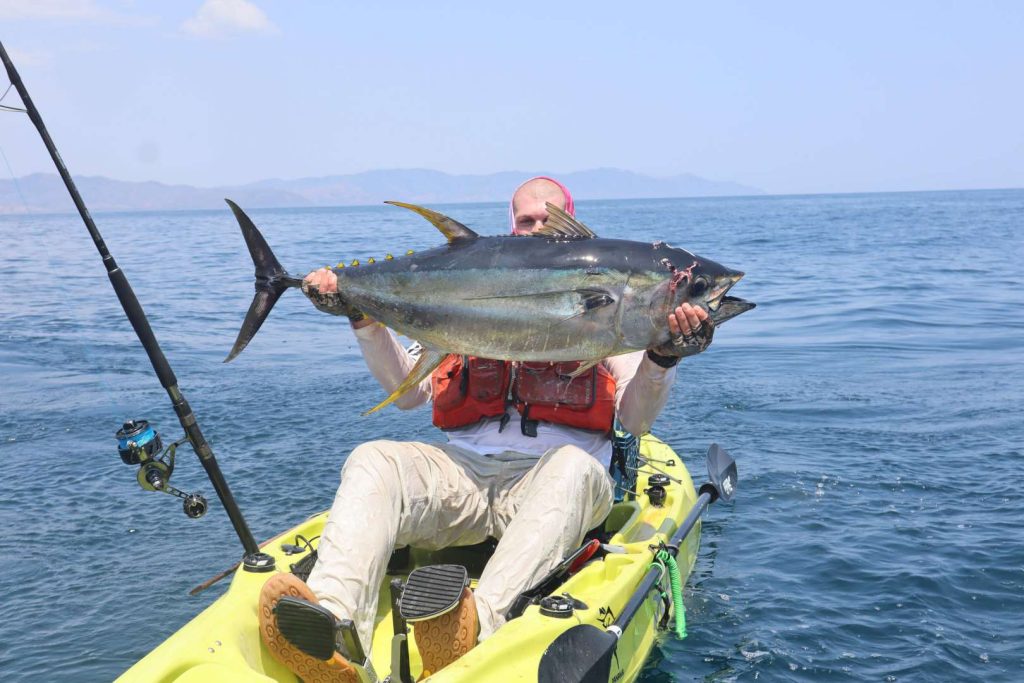
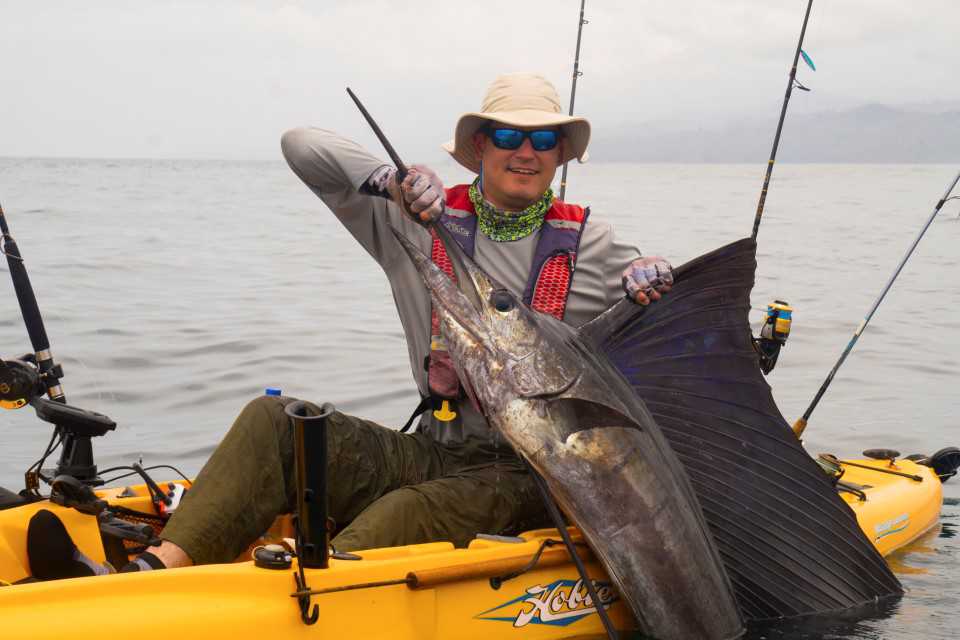
Sailfish
All the sailfish we have hooked and landed so far from the kayaks have been on live baits. Blue runners, bigeye trevallies, and bonito. Some have been hit fast trolling, slow trolling and even sitting still. The average depth for the billfish has been between 70ft and 150ft. We usually find them to be more common in our fishery in the months from March through June, but we see them year-round.
Wahoo
Most commonly hooked at one of our favorite mother-shipping spots (Wahoo Rock). Most of the wahoo we have landed have come on large poppers casted near the ledge or trolled behind the kayak while popping slow. Some have also come on knife jigs, and GT Icecream lures.
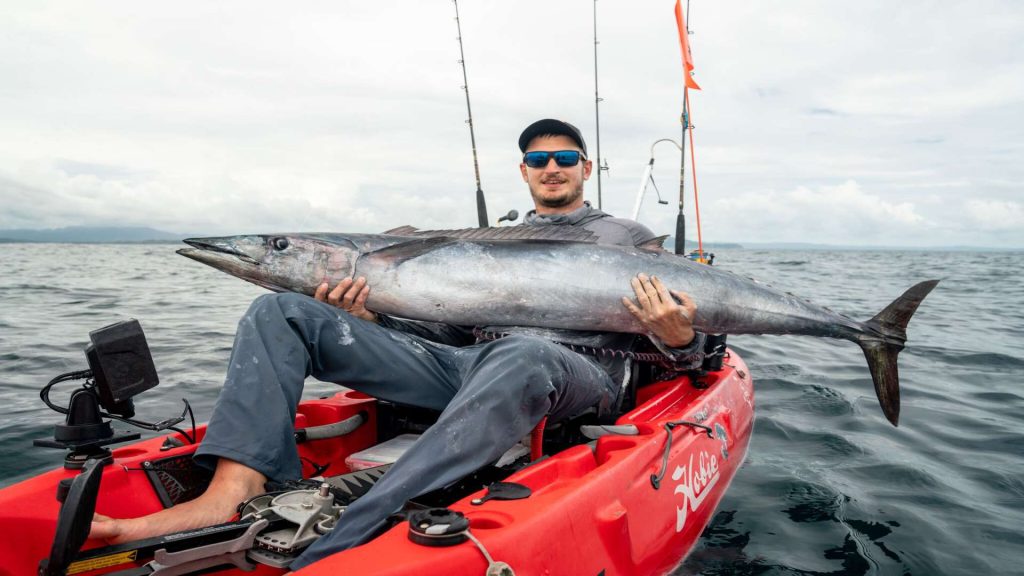
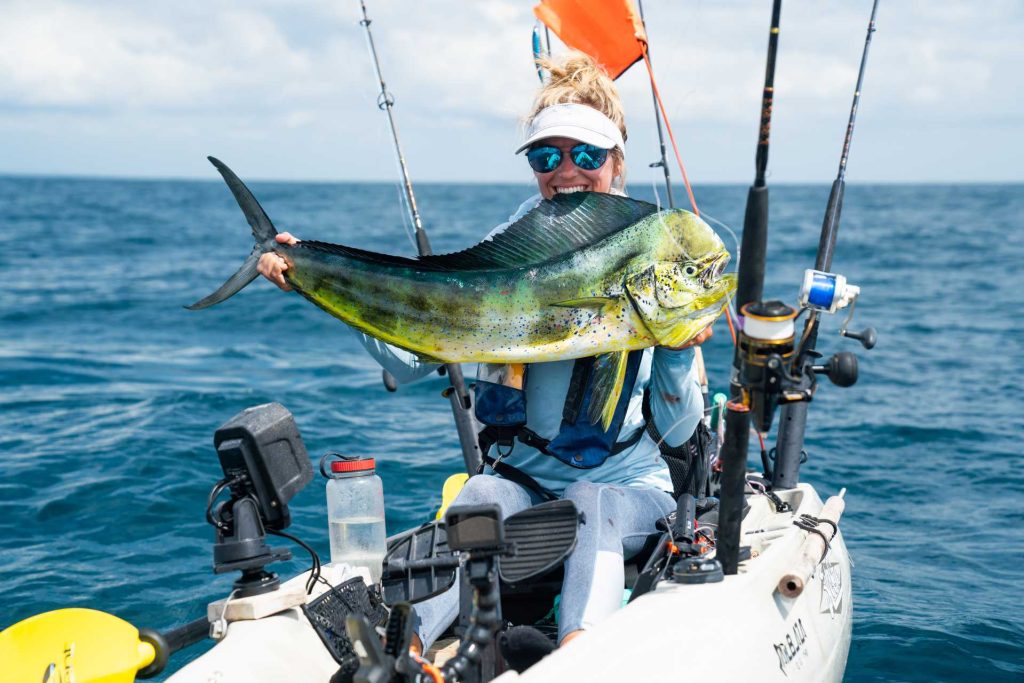
Mahi-mahi
Also called dorado or dolphin. One of our favorite fish because of their great table fare, beauty, acrobatic fights and the fact that they are almost never picky eaters. When mahi are found they generally eat almost anything that is thrown at them. We have caught them on all sizes of knife jigs reeled quickly on the surface of the water, many sizes of Yo-Zuri lures, cut bait and live bait, as well as poppers. They generally hang out around floating debris and current lines deeper than 80ft. Chumming with chunks of bonito is known to bring them in and keep them around the kayak if seen nearby. We commonly find schools of them with an average size of over 20 pounds with some hooked that were pushing 50 pounds!
Sierra Mackerel
Almost always caught on artificial. They love deep diving plugs trolled near the shallows between 20 and 50 feet. We like to troll these plugs when we move from spot to spot and especially after leaving our bay heading to the main fishing area just after launching the kayaks. Larger mackerel prefer knife jigs between 80 and 150g worked near the bottom in 100-150ft.

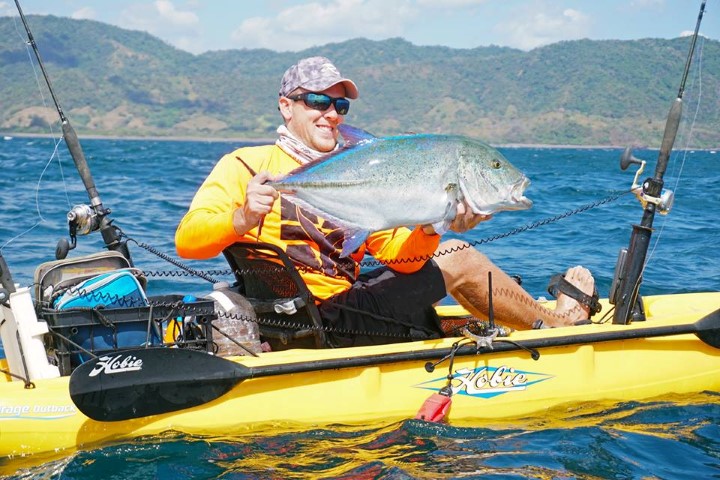
Trevally (Bluefin, Bigeye, Golden, Diamond, Queen)
All these trevally like to hang around the exposed reef and near shallow rocks. Xps jigs are the best for them and when they are picky the crappie jig is sure to get some strikes. Also, shallow diving Yo-Zuri lures and smaller poppers casted along the rocks is a great technique.
Corvina
Smaller individuals 15 pounds and under are caught in shallower areas 30ft and under near rocks and river mouths. They like xps jigs and bucktails worked slowly near the bottom around schools of lookdowns. Larger individuals school up think sometimes near deeper rocks 120ft to 150ft deep and prefer large knife jigs 80-200g bounced on the bottom.
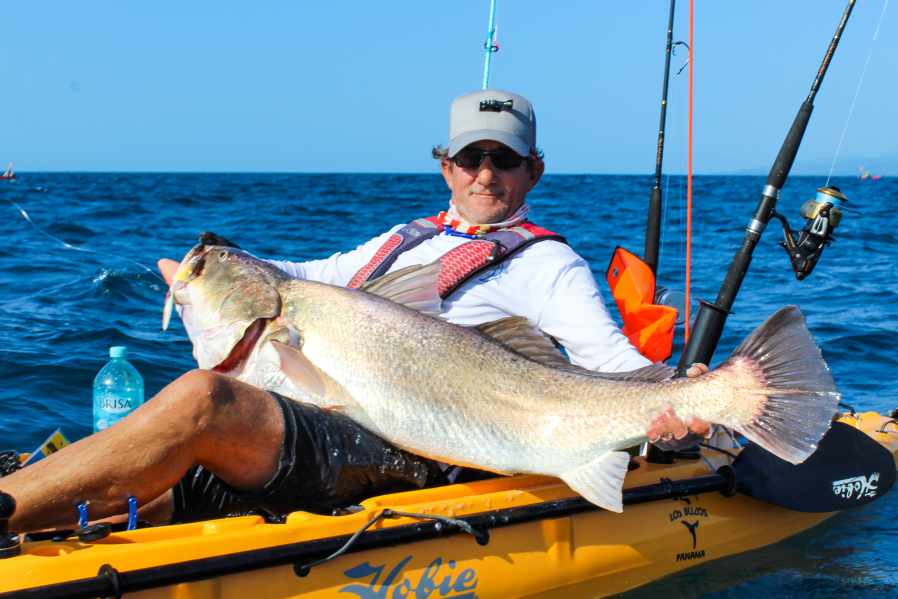
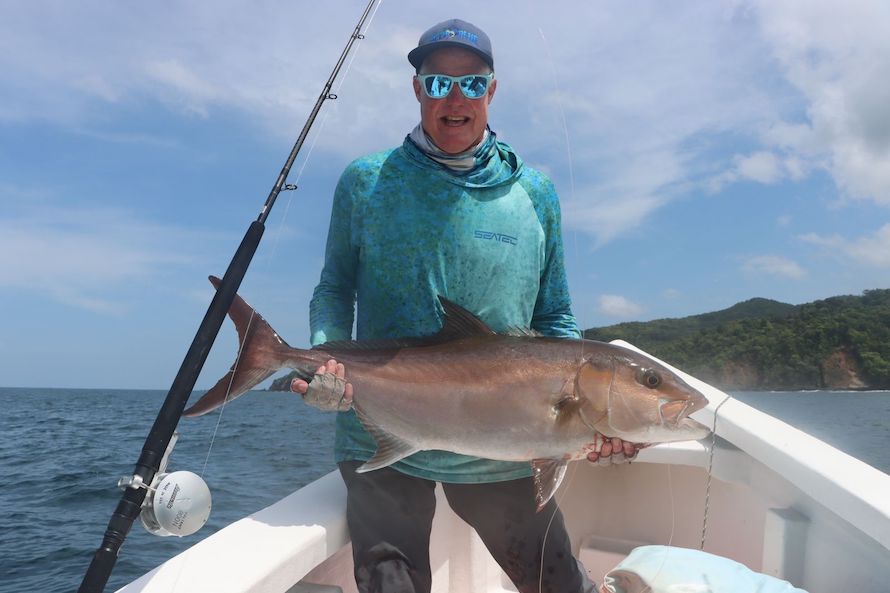
Almaco jack / Amber jack
Always found around structure like exposed reef near deeper water or rocky bottom ranging from 35-250 foot depths. They have been known to smash poppers off the surface especially from September-November. Another proven tactic has been live baits drifted slowly around the reefs or dead baits drifted slowly to the bottom without a weight. Large knife jigs have been known to get their attention as well. These are very strong fish that will try to dive into reefs and structure to break your line. They have to be fought with tight drag and are a very fun challenging fight. They also are one of our favorite fish to eat!
Mullet snapper
These snapper tend to school up in large numbers around the reefs we commonly fish ranging from 30ft to 150ft. Many times they rise to the surface and school so close together that the water appears to turn red. They spook easily but have been known to hit medium size Yo-Zuri Mag Minnows, xps jigs, cut bait, medium poppers, as well as live blue runners.

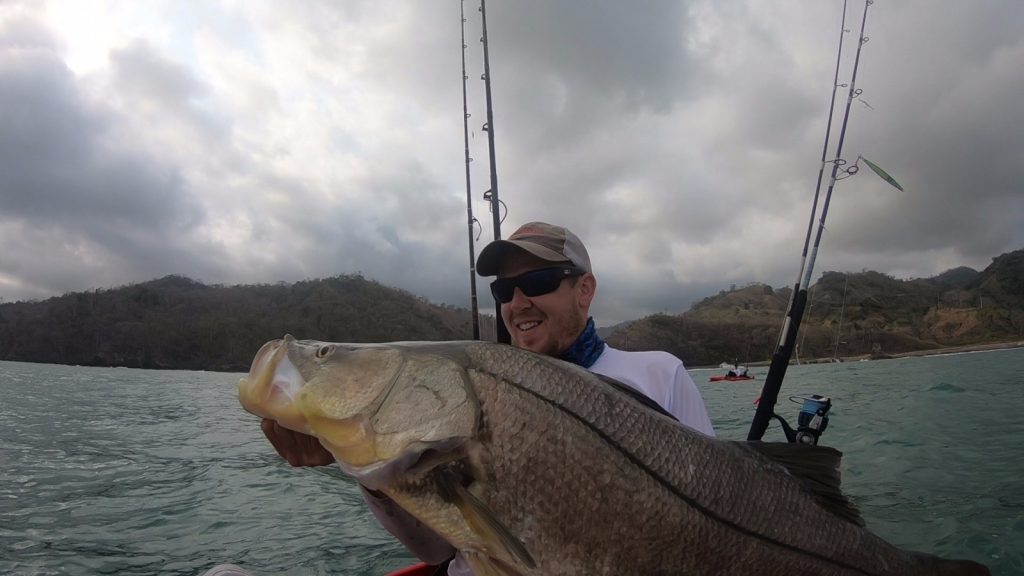
Pacific Black Snook
Larger individuals have all been hooked on live lookdowns in shallow water less than 20ft. They also have been known to hit shallow diving medium or small Yo-Zuri lures and white bucktail jigs. Most of the snook we catch are massive. Panama has been known to grow some of the largest snook in the world. Our neighbors in Costa Rica have consistently put up the world records but as we have a very similar fishery and coast line with less pressure we believe we will take the record from them soon! Some locals claim to have landed 80 pounders but we have not seen them ourselves. These massive fish are sure to take you for a serious sleigh ride while also going completely airborne several times throughout the fight. They are a challenge as they have been known to throw the hook just like tarpon. Generally the dry season is the best time to target these awesome fish.
Rock snapper
Most commonly hooked on xps jigs bounced on the bottom around the exposed reef, steep ledges and rocky bottom anywhere from 15ft to 150ft. They have also been known to take live baits as well as cut bait. A chunk of bonito or blue runner dropped to the bottom is sure to get a strike from one. These are very strong fish, so be ready for a fight with some tight drag!
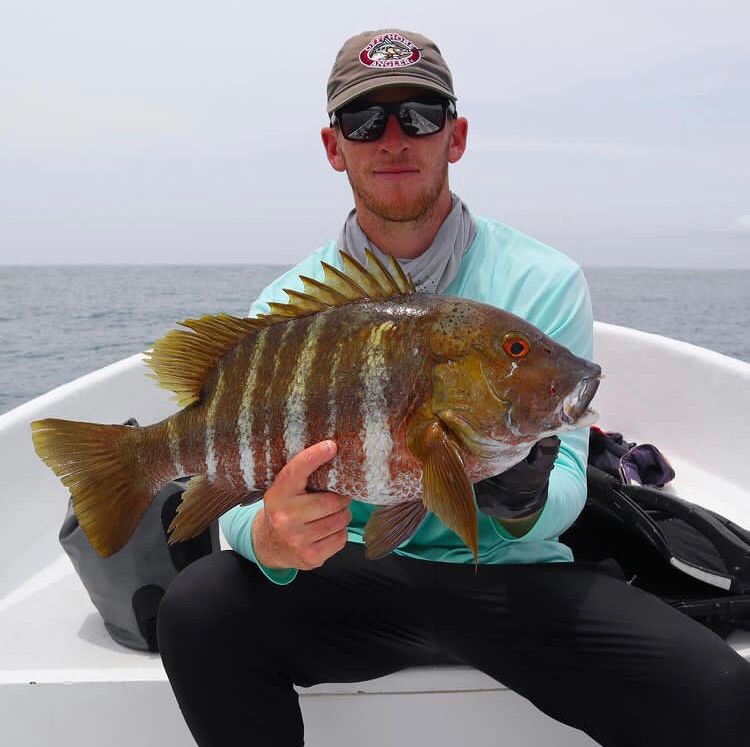
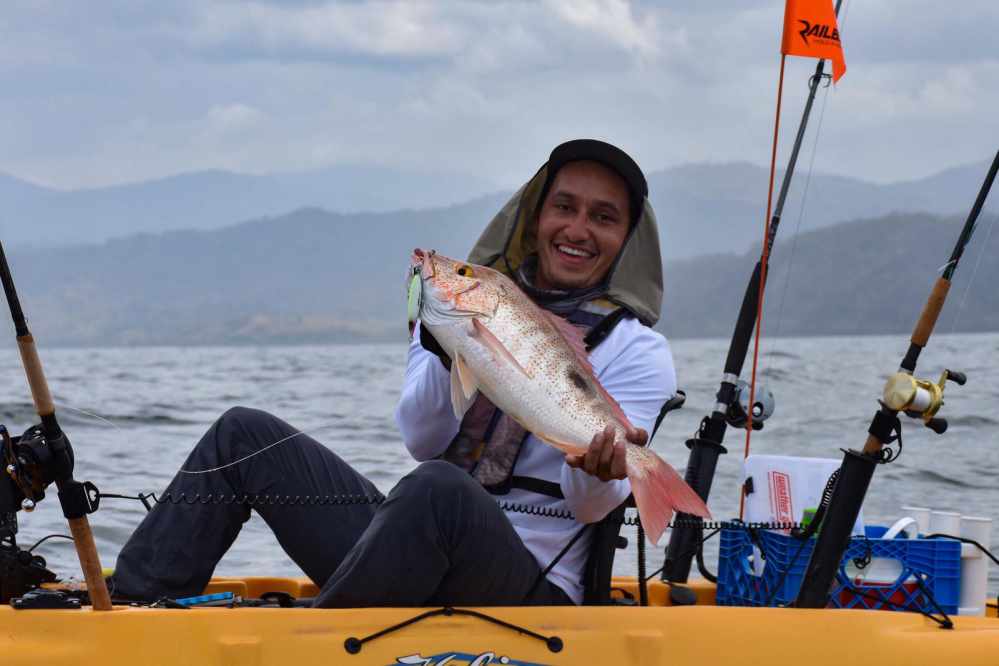
Yellow Snapper / Spotted Rose Snapper
Los Buzos currently holds the IGFA record for Spotted rose snapper! Some of our most common catches. They hang out in all depths from 10ft to 150ft. Almost always found around rocky bottom, or exposed reef. They like knife jigs and xps jigs from 20g all the way to 150g. They are also frequently caught trolling deep diving lures near shallow reefs.
Bonefish
Mostly found in shallow areas inside our bay between 5ft and 15ft but have also been caught jigging the bottom in 150ft. They prefer small bucktails/crappie jigs worked slowly along the sand near bouys as well as small xps jigs bounced on the bottom in the same areas.


Goliath Grouper
These fish have to be one of the toughest fish in our waters to land. They can grow to more than 600 pounds and have been known to even eat sharks! We have hooked several here almost always on live bait but only one guest so far has been able to land one! They hang around any type of structure from 20ft to 300ft of water.
Black marlin
We are very proud to be able to claim that we have leadered the largest documented black marlin ever from a kayak. These are actually a relatively common sight in our waters. Panama is one one of the best places in the world to target black marlin and with Los Buzos being right in between two of the most world renowned marlin fishing operations it is no wonder that we have them here. We have seen them free jumping as shallow as 40ft. The first marlin we hooked was on a blue runner in 70ft and the first one we leadered was in 120ft on a bigeye trevally. When fishing for them from a kayak, live bait is the best way to go- either drifting slowly or trolling at a fast pace. When fishing from a panga- large trolling lures and cedar plugs have triggered bites.
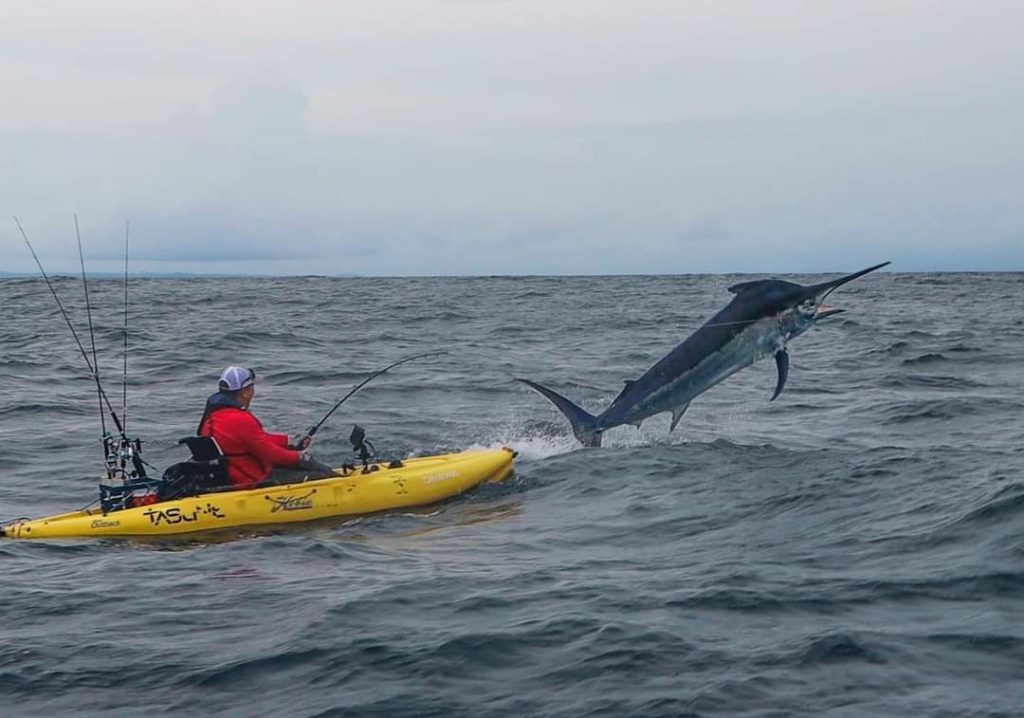
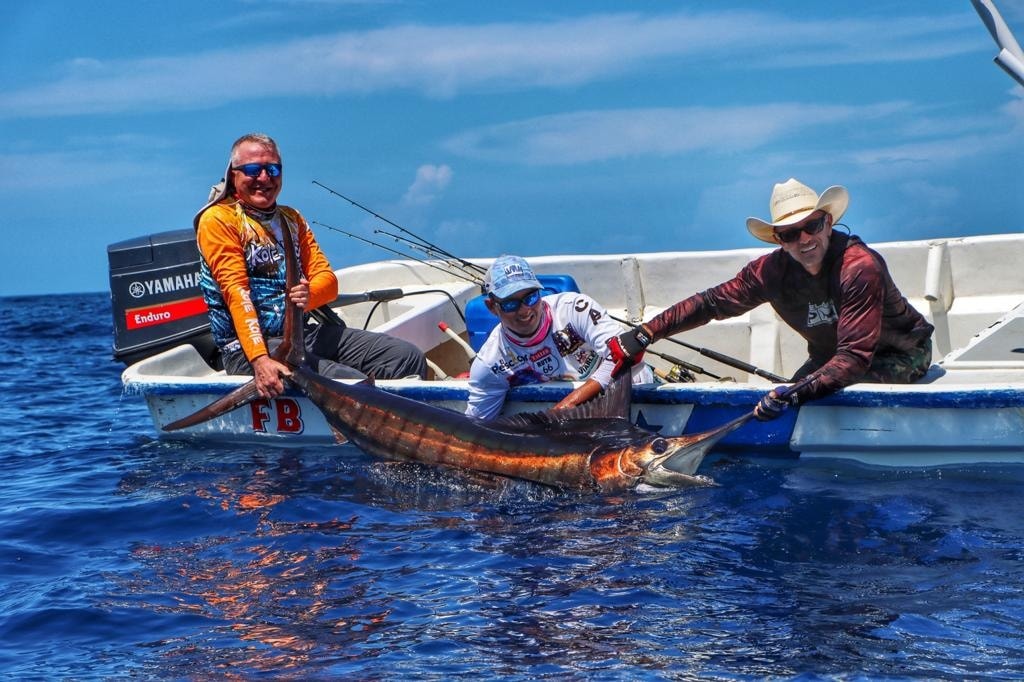
Blue Marlin
With the advent of our custom panga Sportfishing Package also came the beginning of our Blue Marlin Fishery. The Blues tend to hang in the deeper offshore water and like fast trolled lures so they aren’t a bycatch of our kayak program as are the blacks. Now with both of our sportfishing pangas outfitted with outriggers we are on the prowl for these amazing creatures along with increased catches of big wahoo, mahi, and tunas attracted to offshore lure trolling.

